Bovina, Texas, aka Bull Town, Texas, Parmer County. (original) (raw)

History in a Pecan Shell
Bovina's history is encapsulated in the Historical Marker erected in 1968 on US 60 next to large bull sculpture.
Marker Text:
Early in the 20th century, this was one of largest cattle shipping points in the United States.
Originated as the Hay Hook Line Camp of the XIT -- famed ranch that received over 3,000 acres of land in payment for building Texas State Capitol, 1882-1888. One of the earliest structures in Parmer County, division number eight headquarters of XIT, stood 400 yards northeast of site of this marker. The shipping pasture, 640 acres in area, was 1 mile east. The Pecos & Northern Texas Railroad built to this point in 1898, and cattle for eastern markets were loaded here. Train crews called the place "Bull Town", but the community chose the name "Bovina" when establishing the post office in 1899.
This was the first post office in Parmer County, created 1876, named for Martin Parmer (1778-1850), patriot and signer of Texas Declaration of Independence. Although known to explorers early as 18th century, county had few inhabitants before 1907, when it was organized, with Bovina one of its leading towns. By 1915, Bovina had 200 people, 2 churches, a bank, a school, and a hotel for prospective settlers. It is now market and supply center for rich area of irrigated farms, and still produces fine cattle.
(1968)
Bovina Cemetery

Historical Marker:
Bovina Cemetery
Prior to the founding of the city of Bovina, the XIT Ranch located its southern headquarters in this vicinity. The Pecos and Northern Texas Railway built through the ranch in 1898, and the settlement became known as Bull Town because of cattle frequently found on the tracks. A community developed around the railhead, and in January 1899 the official post office name became Bovina. Due to a boom in cattle shipping, the town's population began to grow after the turn of the 20th century. Since then, the city has owned this cemetery, which was maintained for a time by the Bovina Cemetery Association.
The XIT Ranch initially used this site for burials of cowboys. Oral tradition holds that several gravemarkers initially bore only common names of the cowboys, such as Dusty and Big Jim. It is believed there were approximately 40 such graves, but all are now unmarked. The earliest marked grave is that of J.W. McDonald (d. 1907). Bovina Cemetery is the final resting place of veterans of military conflicts dating to World War I, as well as generations of area residents.
Historic Texas Cemetery - 2004
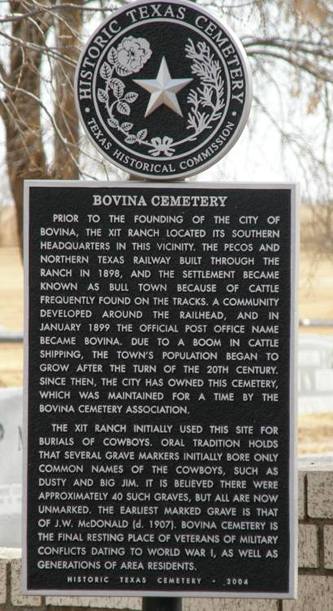
Bovina Cemetery Historical Marker
Photo courtesy Barclay Gibson, December 2008
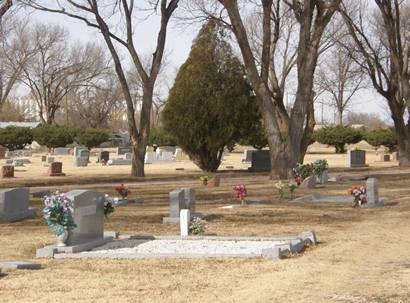
Bovina, Texas Landmarks

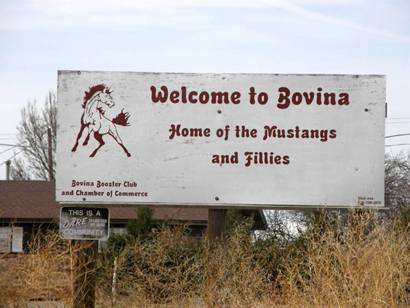
Welcome to Bovina - Home of the Mustangs and Fillies
Photos courtesy Barclay Gibson, December 2008
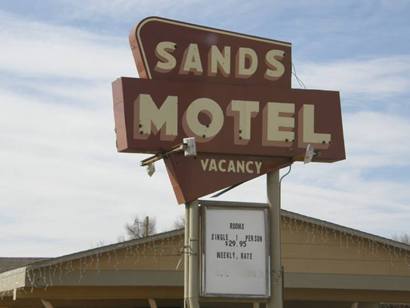
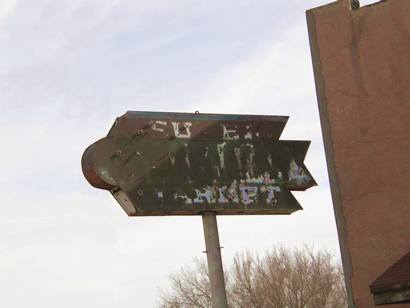
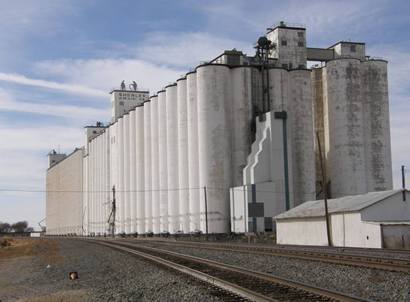
Related Article
Bull Town Cartoon by Roger T. Moore
Texas Escapes, in its purpose to preserve historic, endangered and vanishing Texas, asks that anyone wishing to share their local history, stories, landmarks and recent or vintage photos, please contact us.